Reviews
Peter Fonda
USA, 1973
Credits
Review by Evan Kindley
Posted on 27 August 2010
Source MPI Home Entertainment VHS
Categories Favorites: Time Travel
Peter Fonda’s Idaho Transfer was made in the wake of the mass cultural phenomenon of Easy Rider (which Fonda co-wrote and produced) and the modest succès d’estime of The Hired Hand (which he directed). It tends to be remembered, if at all, only as a box office disaster (if not quite as spectacular an example of the genus as The Last Movie, spawned by Fonda’s Easy Rider collaborator Dennis Hopper a couple of years earlier), its failure hastened by the financial collapse of its distributor, Cinemation, the same week as its initial release. Sounding an overtly environmentalist note a few decades before American moviegoers were accustomed to such concerns, Fonda further reduced the film’s chances of success by casting all nonprofessional actors and adopting a languid, minimalist directorial style that was not what audiences, at the dawning of the age of Coppola and Scorsese, thought they wanted from the New Hollywood. It’s interesting to reflect now that Idaho Transfer came out in 1973, the same year as the formation of Europe’s first Green Party and the release of Terrence Malick’s Badlands, both events with which, in retrospect, it feels entirely in sync. It’s also a far better film than its checkered reputation suggests: not a masterpiece, but a singular, thought-provoking variation on that most time-honored and well traveled of sci-fi tropes: time travel.
Idaho Transfer opens on a couple of shaggy-haired, earnest-faced young people in their early twenties busying themselves catching, tagging, and measuring snakes in the Idaho desert. Such a procedure must obviously have some scientific purpose, but the kids on display here don’t look like scientists: more like audience members at Altamont, or extras in a Henry Jaglom film. After gathering her data, one of the researchers descends into a white, coffin-like “transfer cell” and manipulates a console that looks not unlike an early 70s tape deck. She then takes off her canary yellow trousers and stuffs them into a small stowaway compartment, along with her boots and clipboard. As a Prophet synthesizer whines ominously on the soundtrack, she is transported (or “transferred,” in the lingo of the film) 56 years into the past - or, for her, the present: 1973 - and an eerily empty office building populated only by still more young hippies with flat affects and cooled-out drawls.1
It soon emerges that all of these nubile, intellectually curious young people are employed by a top-secret research program directed by a physicist named George Braden and funded by the U.S. government, though under false pretenses: “they still think we’re working on material projection” or, in other words, spatial rather than temporal transport. (In fact Braden’s machine moves its users through space as well as time, depositing them at a remote spot in the Idaho desert about eleven miles away from the building.) Unbeknownst to the authorities, Braden’s master plan, neatly summarized by his daughter Isa, is “to secretly transport a lot of young people into the future to bypass the eco-crisis or whatever it is.” (Isa’s frank lack of interest in nailing down the specifics of this apocalypse is shared by the filmmakers; we never learn what exactly is triggering the ecological crisis or even whether it’s really imminent or not, and there’s absolutely no sense of the outside world or its reaction.) Once safely transferred to the future, these unspoiled children will “start a new civilization,” one presumably based on saner, more humane, and more sustainable premises than the one they’re leaving behind.
To this end, Braden has developed a method of time travel physically possible only for youth: “Something to do with the kidneys,” Isa explains. “It’s curtains for anyone much over twenty to try it.” This Logan’s Run-esque twist is one of the stranger details (along with the necessity of removing one’s pants but not, apparently, shirt or underwear before traveling through time) in a stark, eccentric script by Thomas Matthiesen that Fonda milks for its maximum load of post-60s comedown dread. Fonda practically patented hippie disillusionment with Easy Rider, and the fact that two of the principal characters - Isa and her younger sister Karen - are literally Braden’s offspring only underlines the sense of abandonment and betrayal that the so-called “flower children” were facing down by 1973. The kids involved in the program are so thoroughly disillusioned with society that they welcome the chance to start fresh, and the blighted empty spaces of the Idaho desert circa 2029 appeal to their emotional damage as much as to their transcendentalist tendencies: “I like it here,” Karen remarks, with an air of quiet relief. “Nobody trying to wreck anybody else.” And while that doesn’t prove to be precisely true, there is an undeniable feeling for nature - even as uninviting a swath of it as Idaho’s Craters of the Moon National Monument - in Fonda’s long takes and wide, wide shots.
While clearly made without an excess of either funds or technical sophistication, Idaho Transfer has a distinctively grungy, low-rent look all its own. The scenes in the transfer cell are actually some of the more inventive and convincing cinematic depictions of what the experience of time travel might actually feel like: during the moment of transfer the film speeds up, the camera shakes, and the image of the traveler becomes transparent and leaves lingering traces reminiscent of LSD trails. And though it’s largely a mood piece, it’s does eventually develop a plot, centering around Karen’s growing dissatisfaction with her father’s enterprise and subsequent discovery of more and more of the pernicious side effects of time travel. When funding for the project is unexpectedly cut off, she and the other researchers spend more and more time hiding out in the postapocalyptic future, returning to the present only to grab supplies and to wash their clothes. It’s in these ensemble scenes that Fonda’s decision to cast nonactors is most frustrating: whatever dramatic tension exists in the personal relationships and power struggles of the research team is utterly deflated by the performers’ stoned robotic line readings. On the other hand, the ineptitude of the acting in these scenes does nicely underscore how utterly fucked these kids - and, by extension, the whole human race - ultimately are: in Idaho Transfer, the fate of civilization rests in the hands of these anonymously attractive, not especially talented bohemian hipsters. If a neutron bomb were to go off tomorrow killing everyone but the inhabitants of a three-block radius around the Bedford Avenue L Station in Williamsburg, we might be facing something like the same situation.
In the latter third of the film Karen and her friends wander the flat, rocky, debris-strewn landscapes of southern Idaho, as the musical score morphs from sci-fi gizmodal to plangent post-hippie faux-bucolic (flutes, acoustic guitars). Karen briefly tries to put the moves on Ronald, another researcher and a thoroughly uncharismatic presence, but he’s all business and has little interest in playing Paul et Virginie in the volcanic wilderness. They find a dusty, abandoned car with a child’s toys left in the backseat and, a little later, an old Southern Pacific railroad line mysteriously full of dead bodies in plastic bags. There are also reports of roving tribes of mentally retarded survivors living on wild potatoes (not shown, which is probably for the best).
Idaho Transfer’s closing moments are violent, intense and, for me anyway, oddly moving. While certainly of primary interest as a curiosity, the movie surely deserves better than to be banished to the netherworld of forgotten B movies or 70s drug-fueled follies. Throughout, Fonda’s focus is not on mere trifles like plot or character but solidly on his grand theme: the obvious unsustainability of the human race’s ecological practices, a matter which has certainly not declined in relevance since the film was made.2 Unusually for American filmmakers, Fonda and Matthiesen evince a Herzogesque lack of faith in society to keep itself going, though without the saving sense of sublimity: the Latin phrase “ESTO PERPETUA” - “Let it be perpetual,” the state motto of Idaho - is a decidedly dark joke. Nothing is getting perpetuated by these cynical children, who have already come out on the other side of 60s utopianism: “Perpetuation and all the crap that goes with it is just a big hoax anyway,” as one of them succinctly puts it. While they occasionally allow themselves to speculate about a new and better world - “We could call the boys girls’ names and the girls boys’ names!” Karen touchingly suggests - for the most part the men and women in Idaho Transfer are simply trying to survive, and to play out the lousy hands that time and technology have dealt them. As they log more and more hours out in the desert, the concept of time itself, of meaningful distinctions between one moment and another, and, especially, of forward progress begins to come apart in their hands: “The beginning’s as much a part of the end as the middle.” Having gotten into the time travel business hoping, however remotely, for “a different kind of beginning,” they begin to consider the possibility that science may have produced only “a shiny new end.”
- The mood of the office environment is not far from the health spa in Altman’s 3 Women, made four years later; the presence of Keith Carradine, the only professional actor in a cast of amateurs, further brings Altman to mind, though as yet the only Altman film he’d appeared in was McCabe & Mrs. Miller, in 1971.↩
- In an open-hearted introduction on MPI’s 1988 videocassette release, Fonda notes that in 1973 most politically active filmmakers were more concerned with the war in Vietnam than with environmental issues, and it must be said that Idaho Transfer’s politics have worn better than many greater and more famous movies of the time.↩
More Favorites: Time Travel
-

Bill and Ted’s Excellent Adventure
1989 -
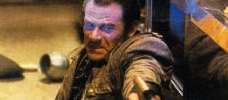
Trancers
1985 -

The Time Machine
1960 -

Groundhog Day
1993 -

Warlock
1989 -

The Navigator
1988 -
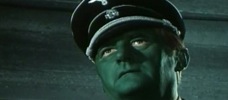
Tomorrow I’ll Wake Up and Scald Myself with Tea
1977 -

The Spirit of ‘76
1990 -

Flight of the Navigator
1986 -

La jetée
1962 -
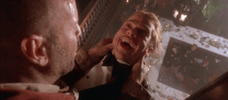
Twelve Monkeys
1995 -

Beastmaster 2: Through the Portal of Time
1991 -

Peggy Sue Got Married
1986 -
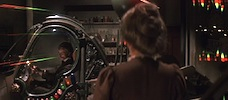
Time After Time
1979 -

Somewhere in Time
1980 -
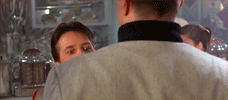
Back to the Future
1985 -

Back to the Future Part II
1989 -

Back to the Future Part III
1990 -
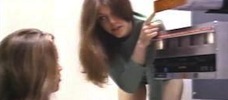
Idaho Transfer
1973 -

Unidentified Flying Oddball
1979 -

Slaughterhouse-Five
1972 -

The Lake House
2006 -

Time Bandits
1981 -

Doctor Who
1963–present -

Doctor Who
1963–present
We don’t do comments anymore, but you may contact us here or find us on Twitter or Facebook.



